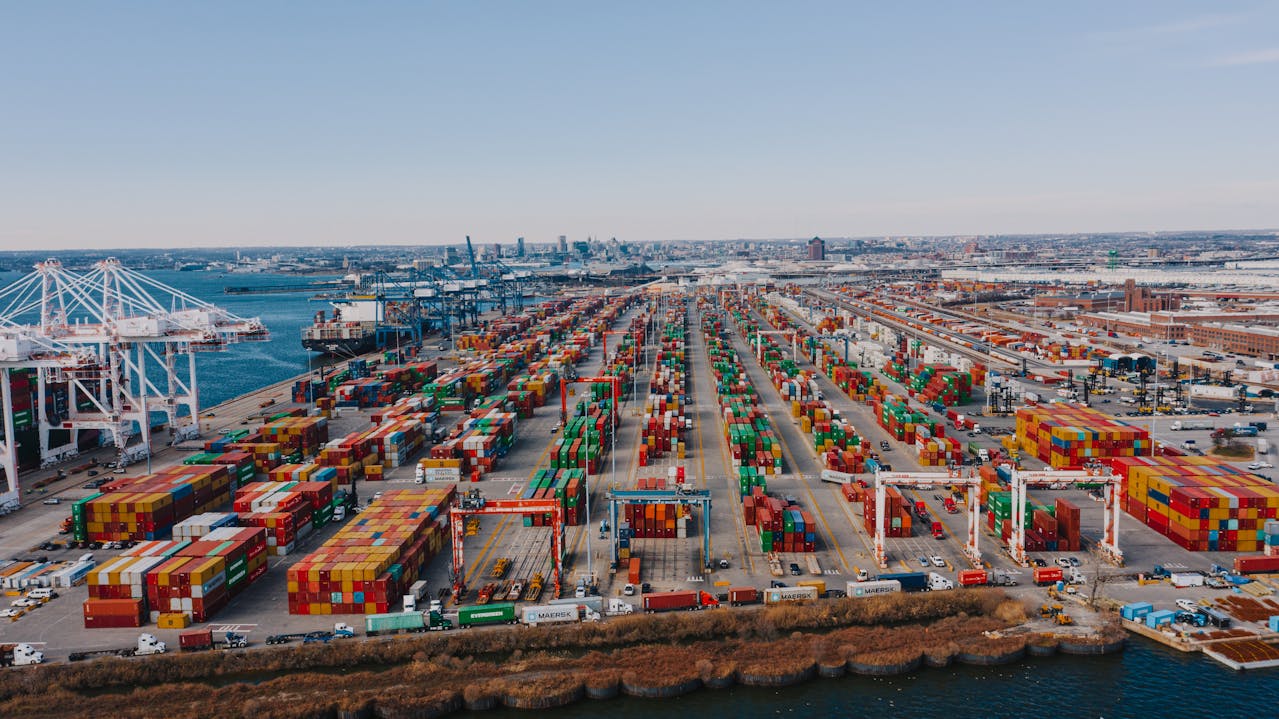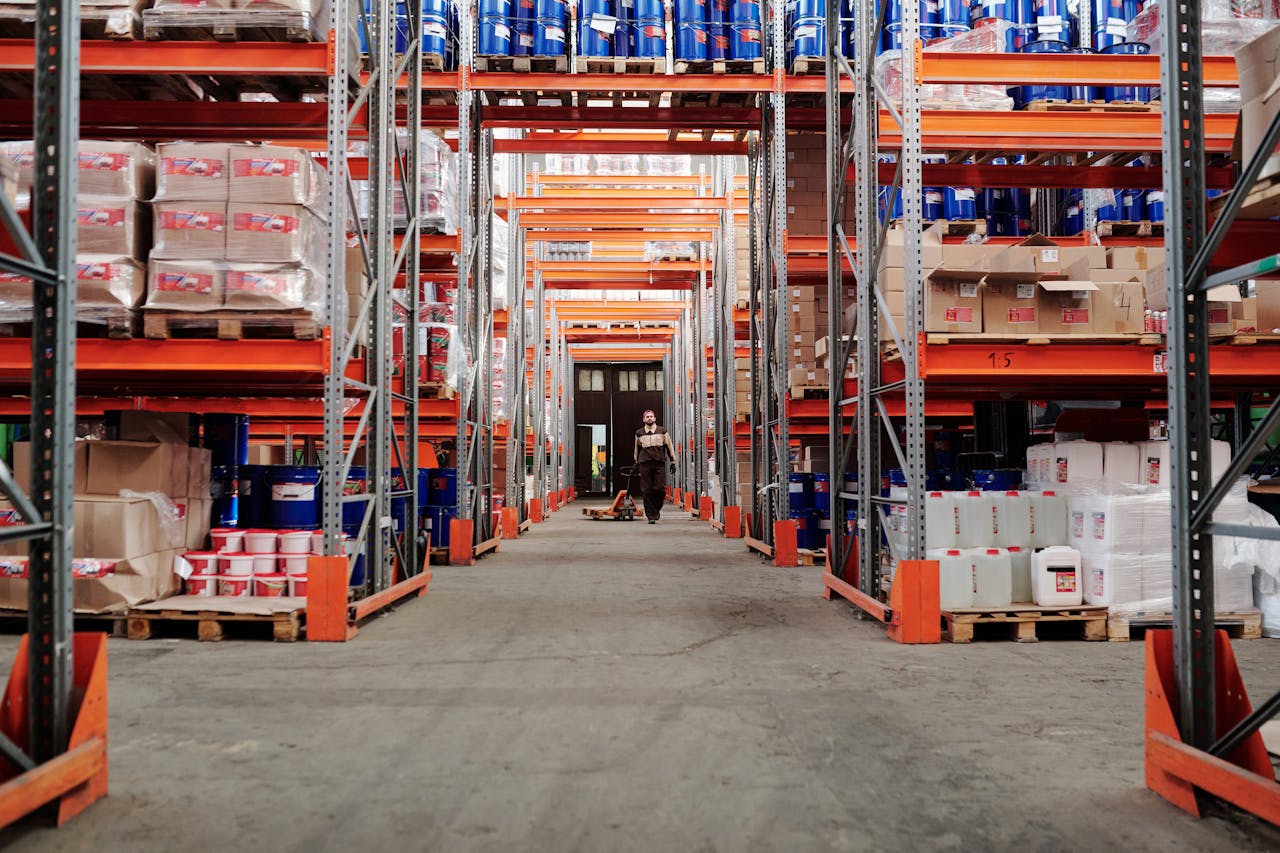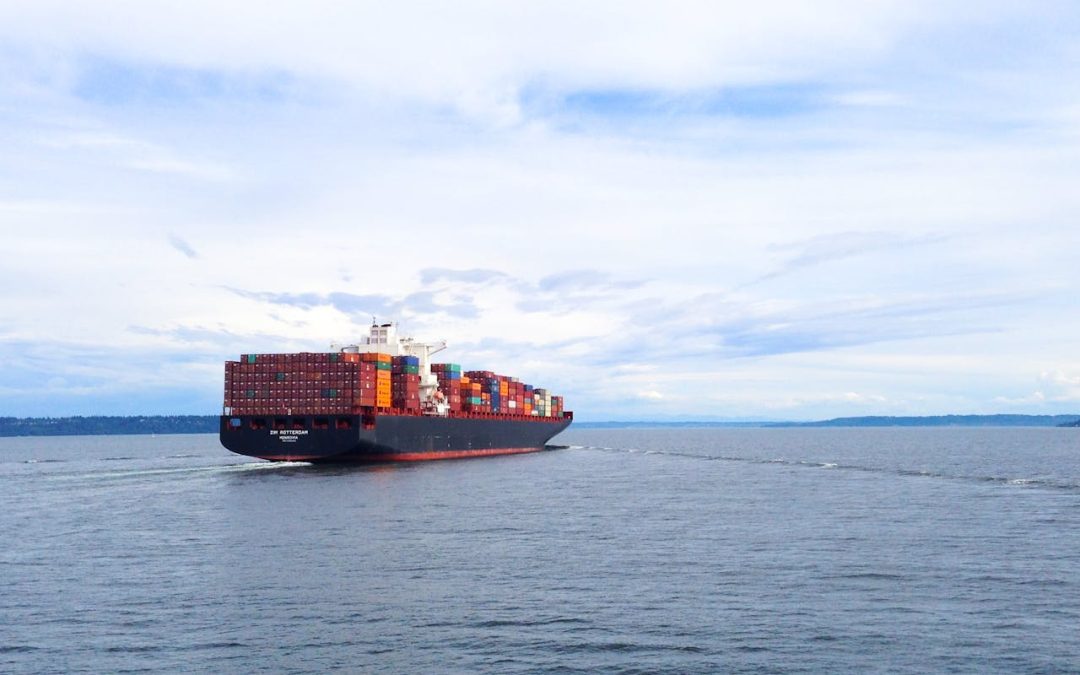আপনার গাড়িটি শোরুমে পৌঁছানোর আগে কত মাইল ভ্রমণ করেছিল? আপনার গাড়ি হওয়ার আগে সারা বিশ্ব জুড়ে রয়েছে। চালিত নয়, অবশ্যই, সেই ওডোমিটারটি মিথ্যা নয়, তবে অংশগুলির পরিপ্রেক্ষিতে। ইস্পাত ভারত থেকে, মাইক্রোচিপ চীন থেকে, গ্লাস ফ্রান্স থেকে আসতে পারে… এই সমস্ত অংশগুলি একটি গাড়ি হওয়ার আগে নির্ভুলতার সাথে পাঠানো হয়েছিল এবং পরিচালনা করা হয়েছিল।
বিশ্বব্যাপী পণ্য সরানো একটি ট্রাকে জিনিসপত্র পাওয়ার চেয়ে অনেক বেশি। আমরা এটিকে সহজ দেখাতে পারি (এবং আমরা করি!), কিন্তু আমাদের বিশ্বাস করুন, পর্দার পিছনে অনেক কিছু চলছে...
যাত্রা পরিকল্পনা
এটি A থেকে B তে যাওয়া পণ্যের মতো সহজ নয়; অনেক পণ্য বিভিন্ন পরিবহন পদ্ধতির একটি ক্রম ব্যবহার করে - একে মাল্টি-মোডাল শিপিং । এবং আমাদের কাজ হল পরিকল্পনা তৈরি করা যা এই পণ্যগুলিকে তারা যেখানে আছে সেখান থেকে নিয়ে যাবে, সেগুলি সমুদ্রে পাঠানো হোক না কেন, বাতাসে উড়ে, ট্রেনে পরিবহন করা হোক বা রাস্তায় নেওয়া হোক।
প্রথম পর্যায় - প্রি-ক্যারেজ (উৎপত্তি)
কারখানা থেকে, যেখানে পণ্যটি তৈরি করা হয়, পণ্যগুলি পরিবহনের সময় তাদের সুরক্ষার জন্য সাবধানে প্যাকেজ করা হয় এবং সমস্ত শুল্ক প্রবিধান পূরণের জন্য নথিভুক্ত করা হয় - সেই রপ্তানি নথিগুলি শিপার বা মালবাহী ফরওয়ার্ডার দ্বারা প্রস্তুত করা হয়।
পণ্যগুলি এক্স-ওয়ার্কস ( EXW ) হয়ে যায়, একটি ইনকোটার্ম (আন্তর্জাতিক বাণিজ্যিক শর্ত) যার অর্থ বিক্রেতা আর পণ্যগুলির জন্য দায়ী নয়, এবং এটি কারখানা থেকে প্রস্থানকারী ট্রাকে লোড করার সাথে সাথেই ঘটে।
পর্যায় দুই - অভ্যন্তরীণ পরিবহন
একত্রীকরণ কেন্দ্রে তাদের পথ খুঁজে পাবে , যেখানে পরবর্তী ভ্রমণের আগে খরচ-দক্ষতার জন্য বেশ কয়েকটি ছোট চালান একত্রিত করা হয়। এটি সর্বদা ঘটবে না তবে পরিবেশগত এবং বাজেট বিবেচনার জন্য অতিরিক্ত লোডিং এবং আনলোড করার উপযুক্ত।
একত্রিত হোক বা না হোক, পণ্যগুলি ট্রাকে করে বন্দর শহরে দীর্ঘপথে পাঠানো হয়।
পর্যায় তিন - মূল বন্দরে
সমস্ত রপ্তানি ডকুমেন্টেশন ঠিক আছে কিনা তা নিশ্চিত করা কাস্টমস ক্লিয়ারেন্সের জন্য FF কাজের অংশ। ঠিক হয়েছে, এটি কাস্টমস কর্তৃপক্ষের কাছে একটি মসৃণ হস্তান্তর।
তারপরে টার্মিনাল হস্তান্তর ঘটে, যেখানে একটি চালান ট্রাক থেকে আনলোড করা হয় এবং সমুদ্রের জাহাজে লোড করার জন্য মঞ্চস্থ করা হয়।
পর্যায় চার - মহাসাগর মালবাহী
ভেসেল লোডিং টিম নিশ্চিত করে যে, ওজন বন্টন এবং সমস্ত নিরাপত্তা বিধি বিবেচনা করে জাহাজে কার্গোটি সাবধানে লোড করা হয়েছে। একবার হয়ে গেলে, সামুদ্রিক মালবাহী জাহাজটি বন্দর ত্যাগ করতে এবং সমুদ্র ও সমুদ্র জুড়ে বিশাল দূরত্ব ভ্রমণ করতে সক্ষম হয়। এই মালবাহী একটি ধারক জাহাজ, একটি বাল্ক ক্যারিয়ার, বা অন্যান্য উত্সর্গীকৃত পণ্যবাহী জাহাজ হতে পারে।

পর্যায় পাঁচ - গন্তব্য বন্দরে আগমন
একবার জাহাজটি তার গন্তব্য বন্দরে পৌঁছালে, জাহাজের স্রাব ঘটে যেখানে কার্গোটি আনলোড করা হয় এবং তারপরে বন্দরের মধ্যে একটি নির্দিষ্ট এলাকায় স্থানান্তরিত হয়।
শুল্ক প্রবিধান মানে FF দলের জন্য আরও কাজ, যা আমদানি শুল্ক ছাড়পত্র পরিচালনা করে এবং নিশ্চিত করে যে সমস্ত ডকুমেন্টেশন গন্তব্য দেশের প্রবিধানের সাথে সম্মত হয়।
পর্যায় ষষ্ঠ - অভ্যন্তরীণ পরিবহন
দ্বিতীয় পর্যায়ের প্রক্রিয়াটিকে বিপরীত করে, পণ্যসম্ভার এখন চূড়ান্ত গন্তব্যে পরিবহনের জন্য ট্রাকে লোড করা হয় - যা সাধারণত একটি গুদাম, বিতরণ কেন্দ্র বা খুচরা বিক্রেতা।
পর্যায় সপ্তম - চূড়ান্ত বিতরণ
একটি ডোর-টু-ডোর পরিষেবা খুঁজছেন? কিছু এফএফ 'ফাইনাল মাইল' ডেলিভারি অফার করে যা পণ্য সরাসরি গ্রাহকের কাছে নিয়ে যায়।

পরিকল্পনা কি আছে?
মালবাহী ফরোয়ার্ডের জন্য, উপরের সমস্ত পরিকল্পনা করা কোন অর্থপূর্ণ কৃতিত্ব নয়! ডেলিভারির প্রয়োজনীয় গতি, মালামালের ধরন, পরিবহন খরচ, বিভিন্ন দেশের একাধিক প্রবিধান এবং আরও অনেক কিছু বিবেচনা করে সর্বোত্তম রুট খুঁজে বের করা আমাদের কাজ। তারপরে কাগজপত্রের প্রস্তুতি রয়েছে - ডকুমেন্টেশন, চালান থেকে শুরু করে প্যাকিং তালিকা এবং কাস্টমস ফর্মগুলি অবশ্যই সম্পূর্ণ নির্ভুলতার সাথে সম্পন্ন করতে হবে (এবং এর কিছু বেশ জটিল!)
আলোচনা এবং বুকিং
মালবাহী ফরওয়ার্ডার হিসাবে, আমরা স্থান সুরক্ষিত করতে এবং আমাদের ক্লায়েন্টদের জন্য সর্বোত্তম রেট পেতে একাধিক ক্যারিয়ারের সাথে কাজ করি - আসলে, আমাদের বেশিরভাগ সময় আপনার পণ্যসম্ভারের জন্য সোর্সিং এবং সিল করার জন্য ব্যয় হয়!
এখানে সম্পর্ক তৈরি করা অপরিহার্য, এবং এটি আমাদের অভিজ্ঞতা এবং বিভিন্ন ক্যারিয়ারের সাথে প্রতিষ্ঠিত সম্পর্ক যার অর্থ আমরা আরও ভাল হার এবং উচ্চতর বিকল্পগুলিতে অ্যাক্সেস পাই। লোকেদের থেকে সেরাটা পাওয়ার জন্য বন্ধুত্ব অত্যাবশ্যক – আমরা খুব বন্ধুত্বপূর্ণ শিল্প!
দৈহিক আন্দোলন
কার্গো চলতে থাকলে আমাদের কাজ বন্ধ হয় না...
ট্র্যাকিং এবং হদিশ
সর্বোত্তম আধুনিক প্রযুক্তিটি ভালভাবে ব্যবহার করা হয়েছে তা নিশ্চিত করে আমাদের সমস্ত যত্নশীল পণ্যসম্ভারের অবস্থানের রিয়েল-টাইম আপডেটগুলিতে নজর রয়েছে।
কাস্টমস বিশেষজ্ঞ
কোনো মসৃণ পণ্য আমদানি বা রপ্তানিতে স্প্যানার লাগাতে পারে এমন একটি জিনিস থাকলে তা হল প্রবিধান। সীমানা বিলম্ব এড়াতে একটি সুবিন্যস্ত প্রক্রিয়া নিশ্চিত করার জন্য পণ্যগুলি সরানোর বৈধতা এবং প্রবিধানের সর্বদা পরিবর্তনশীল প্রকৃতিতে আমাদের দক্ষতা অপরিহার্য।
সমস্যা সমাধান
প্লাস এটি কখনও কখনও পরিকল্পনা হিসাবে ঠিক যেতে না. যেকোন হেঁচকি আসার সাথে সাথে তা মোকাবেলায় আমরা বিশেষজ্ঞ। সমস্যা-সমাধান আমাদের মালবাহী ব্যবস্থাপনা দক্ষতার একটি গুরুত্বপূর্ণ অংশ, এবং কখনও কখনও সেই দক্ষতাগুলি পুঙ্খানুপুঙ্খভাবে পরীক্ষা করা হয় যখন অসুবিধাগুলি পরিচালনা করার এবং দ্রুত বিকল্প সমাধানগুলি খুঁজে বের করার প্রয়োজন হয়।
আপনার ফ্রেট ফরওয়ার্ডার হিসাবে মিলেনিয়াম ব্যবহার করা
যেমনটি দেখা যায়, বিশ্বব্যাপী পণ্য পরিবহনের ক্ষেত্রে প্রচুর পরিমাণে চিন্তা করার বিষয় রয়েছে - এটি অত্যাবশ্যক যে ব্যবসায়গুলি একটি নির্ভরযোগ্য মালবাহী ফরওয়ার্ডারের সাথে অংশীদার হয় যার রুট পরিকল্পনা, আলোচনা, নিয়ন্ত্রণ জ্ঞান এবং সমস্যা সমাধানে দক্ষতা রয়েছে। মিলেনিয়ামের সাথে কাজ করার অর্থ হল আপনি আপনার ব্যবসার উপর ফোকাস করতে পারেন, আপনার শিপমেন্ট ভালো হাতে রয়েছে এই জ্ঞানের সাথে স্বস্তিদায়ক। আজ আমাদের সাথে যোগাযোগ করুন.
…এবং পরের বার যখন আপনি আপনার গাড়িতে উঠবেন, একটু সময় নিয়ে ভাবুন যে এটি কতদূর গেছে!

